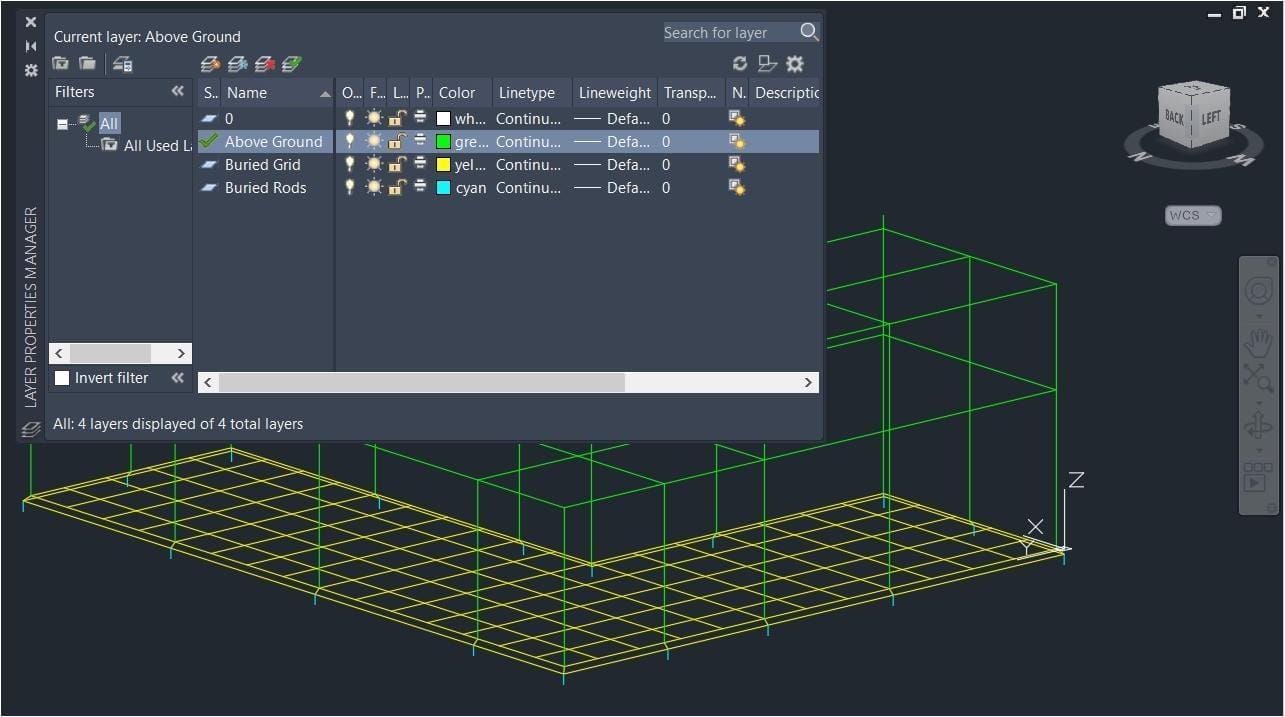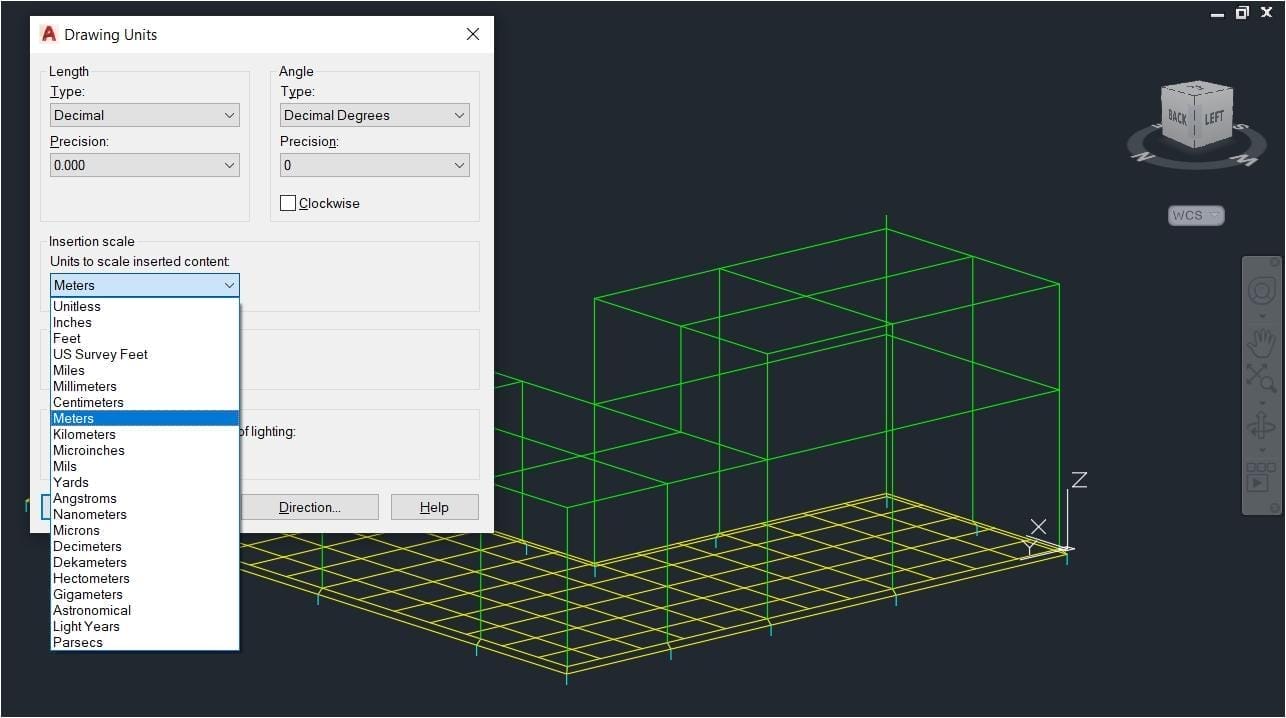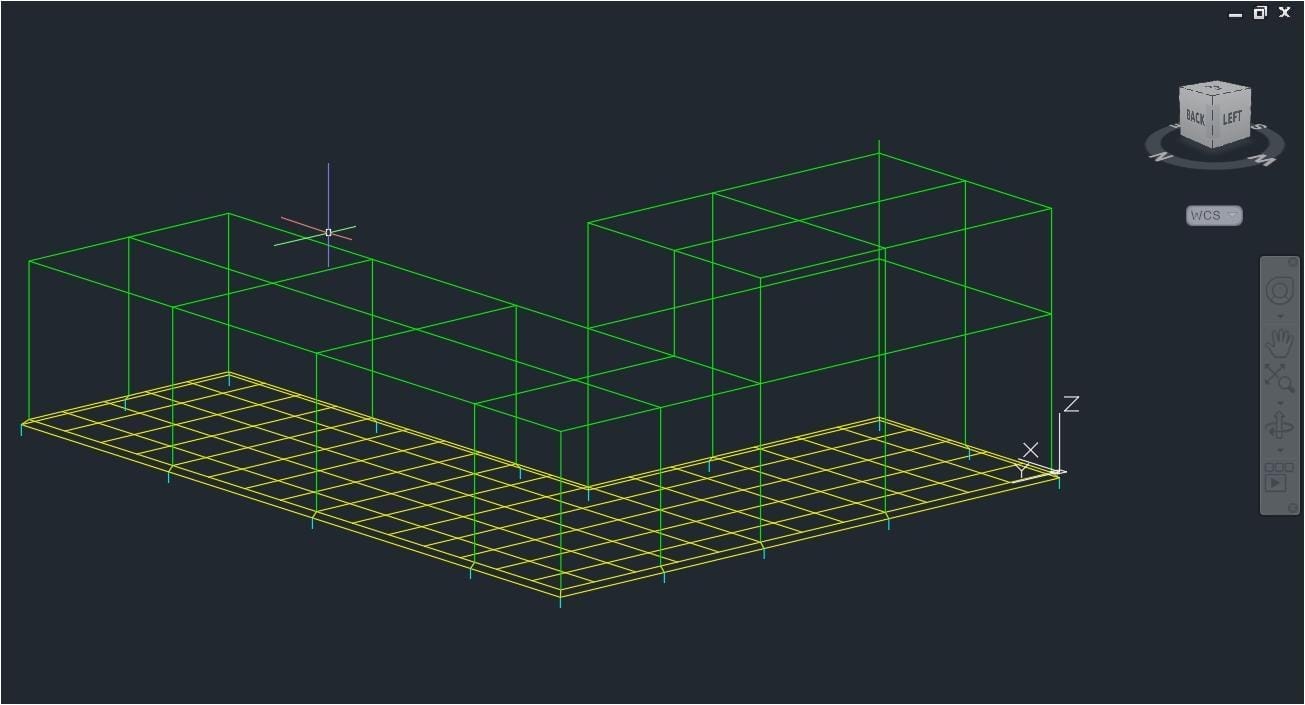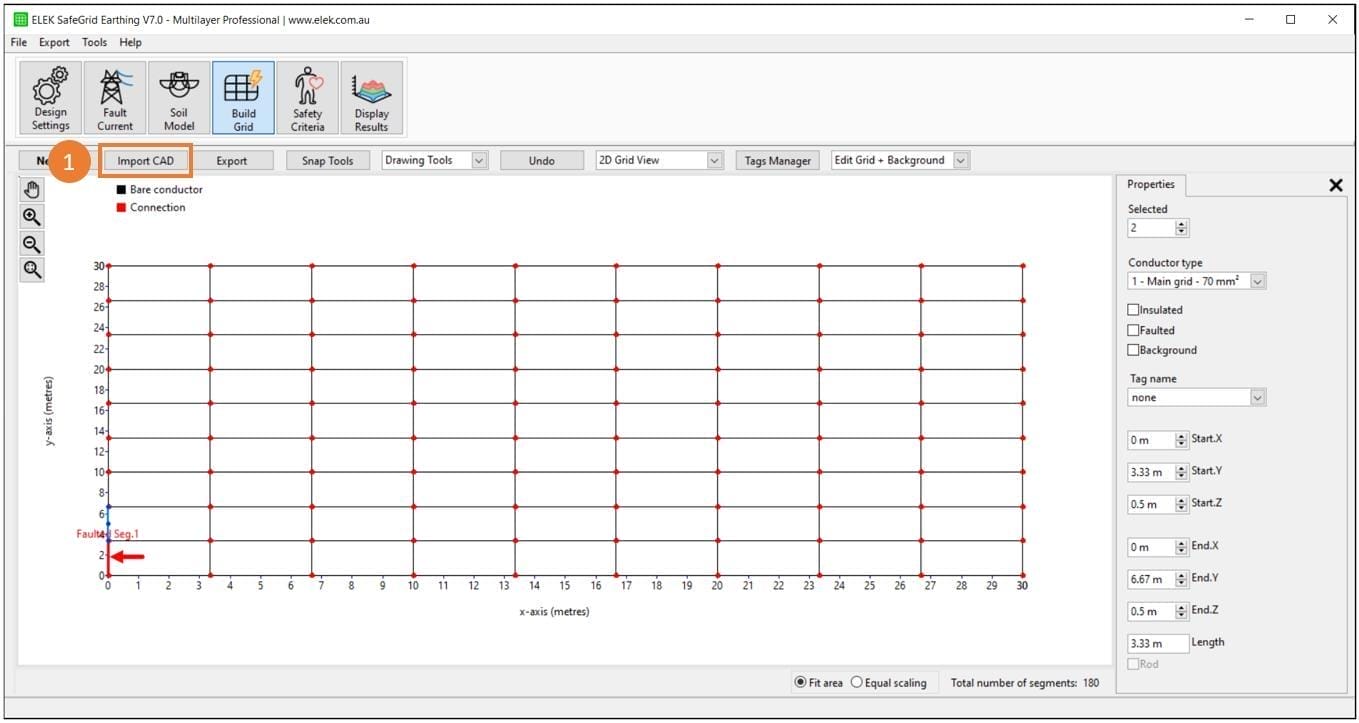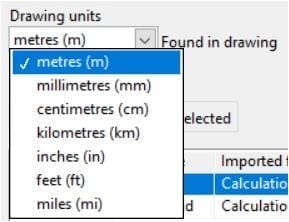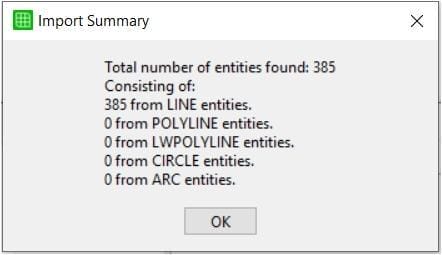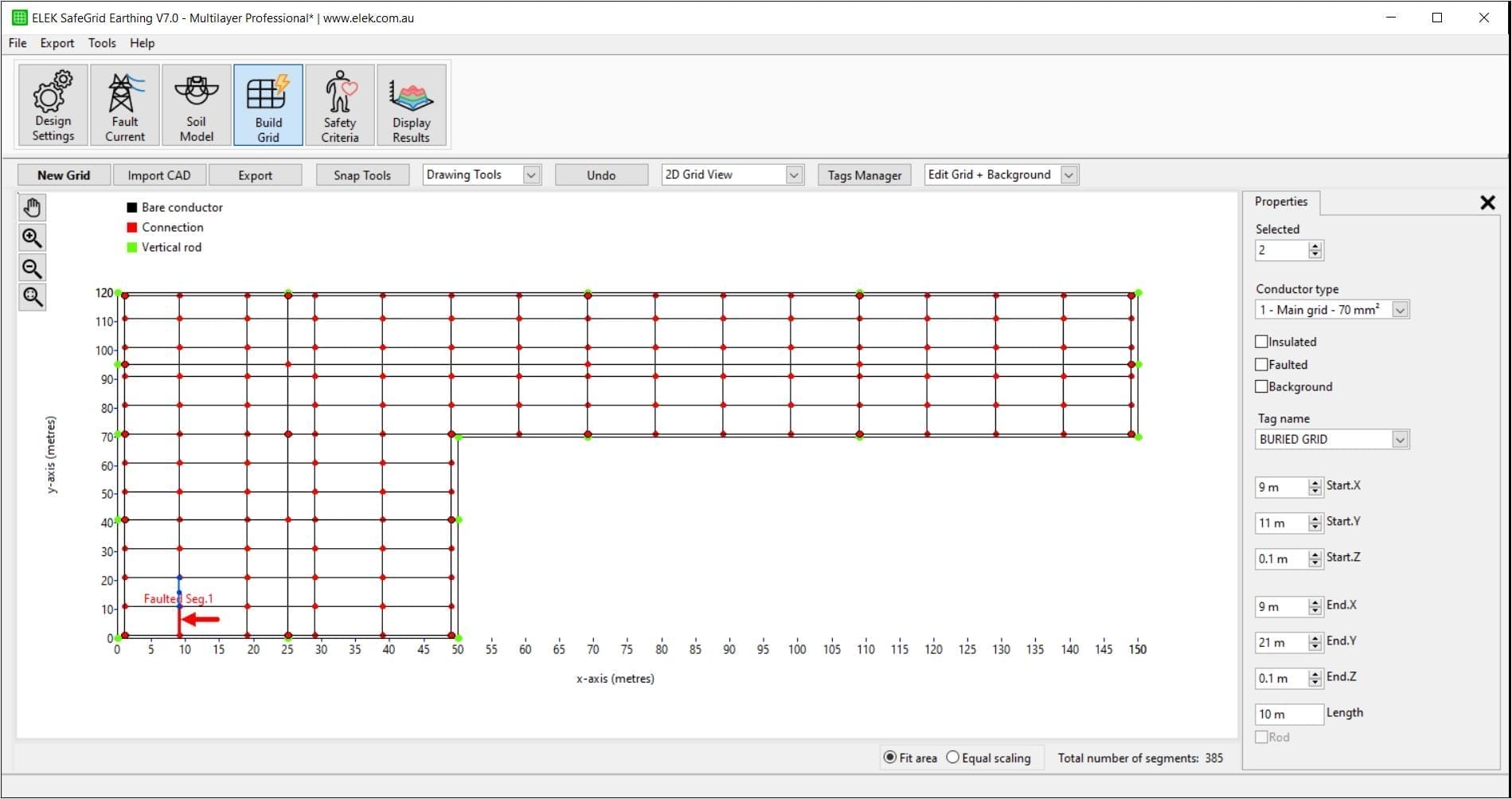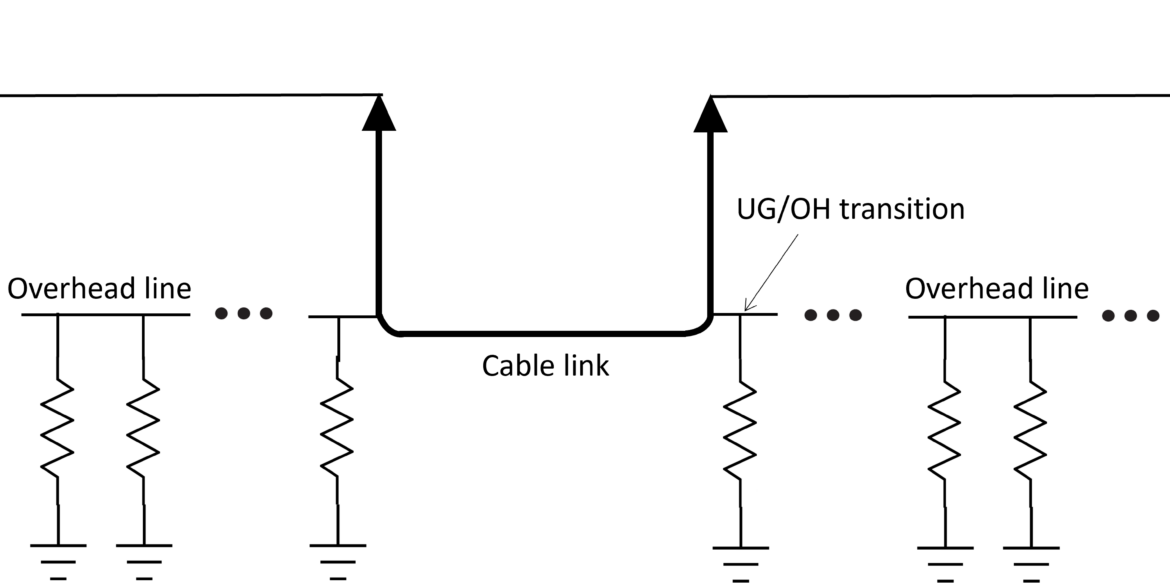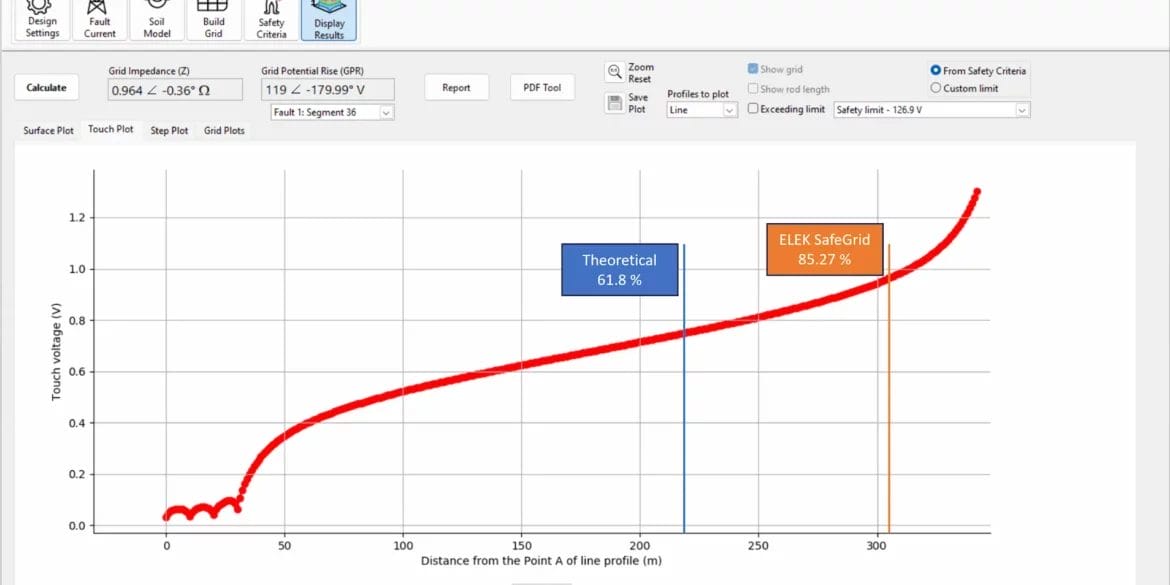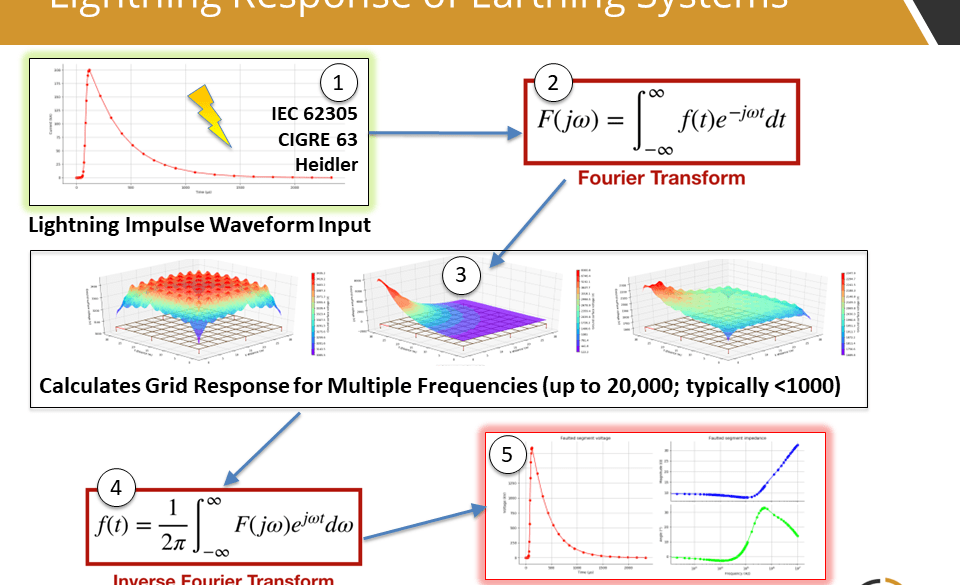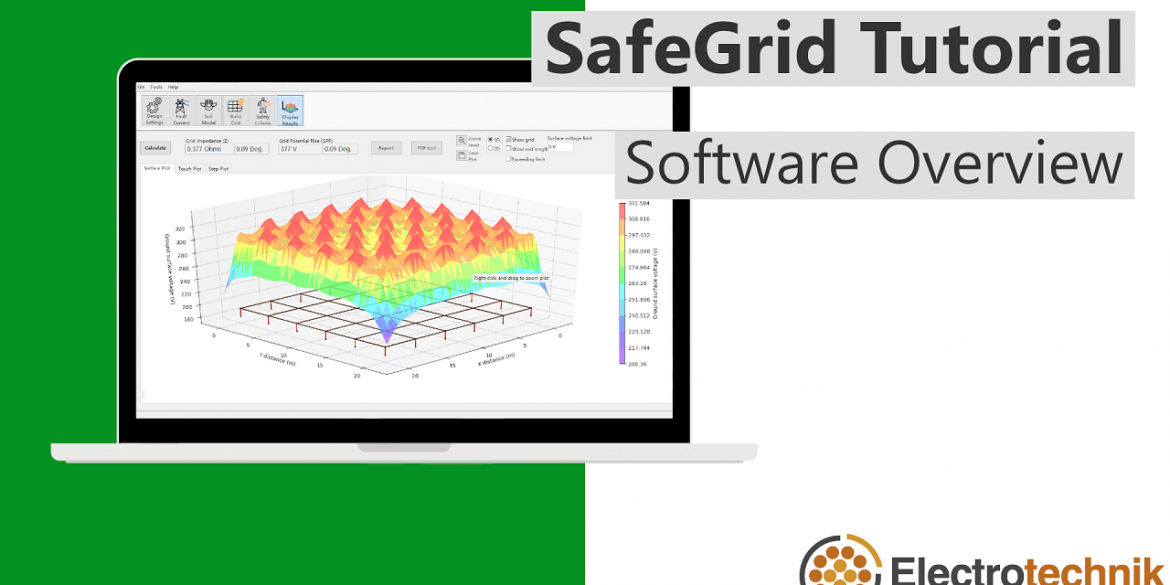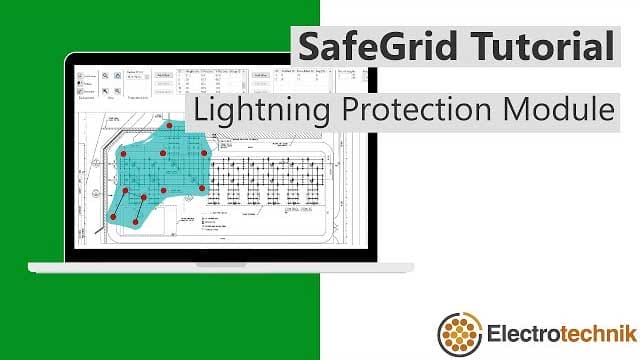Table of Contents
Introduction
ELEK SafeGrid Earthing Software can model custom earthing arrangements of any size or shape in 2D or 3D.You can specify the grid using the in-built editor tools or you can import grids drawn in AutoCAD.
It is easy to draw grids in AutoCAD as connected entities, then save them in the DXF file format and to import them into SafeGrid for calculations. This tutorial will show you how.
The advantages of importing grids from AutoCAD include:
- a) Earthing design drawings created in AutoCAD can be imported directly without re-drawing. This saves time and ensures an accurate representation of the grid.
- b) Custom and complex grids that may be difficult to create with the in-built grid editor can be analysed.
- c) Buried conductor arrangements drawn in 3 dimensions (3D) – X, Y, Z coordinates system can be modelled.
1. Rules for importing
- a) Earthing system drawing should be saved as an ASCII DXF file.
- b) Set the measurement units of the AutoCAD drawing to be in Meters, Centimetres, Millimetres, Inches, or Feet.
- c) Draw the grid using only Lines, Polylines, LWPolylines, Circles, or Arcs entities.
- d) Circles and Arcs will be converted to Lines when imported.
- e) Lines snap connected otherwise an undesired current discontinuity will occur.
- f) If drawn in 3D, Positive (+’ve) Z coordinate signifies depth and negative (-’ve) Z coordinate signifies above-ground.
2. Drawing the earthing system in AutoCAD
Draw your earthing system in AutoCAD (or equivalent software) as connected straight lines, polylines, circles, or arcs.
You can add to an existing drawing, just make sure to create a unique and independent drawing layer or layer(s) for each uniqueearthing system. For example, the earthing system in Figure 1are within unique layers.
3. Example of an earthing system
In the example an earthing system was drawn in CAD in 3D and imported into SafeGrid. The earthing system consists of buried grid, buried rods, and above-ground segments. These were drawn using Lines , but entities drawn in Polylines, LWPolylines, Circles ,or Arcs are also supported.
Select the lines or the layers to import which can be selected according to your requirements:
3.1 Importing the CAD file into SafeGrid

3.2 Import Grid from CAD File settings




- a) Layer name – Layer names read from DXF file are displayed here.
- b) Tag name – Specify tag names of layers. The segments with the same tag name can be quickly included/excluded for the calculations later. Tag names can also be modified after the import. Layer names are used as default tag names
- c) Imported for – Layers can be imported for calculations or as the background which can also be changed in the main UI after the import.
- d) Conductor type – Select the conductor type for the layers which were defined under Design Settings. Conductor types are settable in the Design Settings window.



3.3 Import Summary
After the import,the Import Summary window is displayed. The Import Summary lists the CAD entities found.
The user should verify the Import Summary and make sure the intended entities have been imported correctly.
